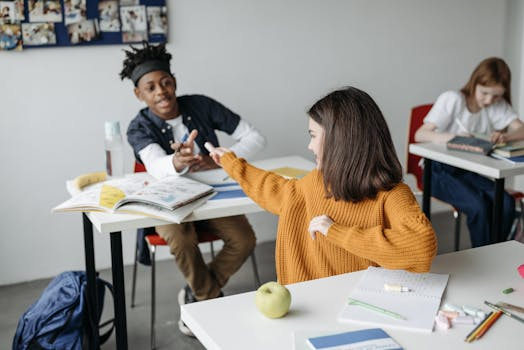The Flipped Classroom Model: 5 Years Later
The Flipped Classroom Model has been making waves in the education world for the past 5 years. Originally popularized by chemistry teachers Jonathan Bergmann and Aaron Sams in 2007, this innovative approach has been adopted by educators all over the globe. But what exactly is the Flipped Classroom Model, and how has it evolved over the years? In this article, we’ll delve into the history of this teaching method and explore its impact in classrooms today.
The Basics of the Flipped Classroom Model
First and foremost, it’s important to understand the core concept of the Flipped Classroom Model. Simply put, it involves “flipping” the traditional approach to teaching. Instead of students listening to lectures in class and then completing assignments at home, the flipped model has students watching pre-recorded lectures or reading materials at home and then utilizing class time for hands-on activities and discussions.
This approach allows students to have more control over their learning, as they can watch or read materials at their own pace outside of the classroom. In turn, teachers have more flexibility in how they use class time, as they can focus on engaging students in activities and discussions rather than just delivering lectures.
The Early Years of the Flipped Classroom Model
As mentioned, the Flipped Classroom Model gained significant attention in 2007 when Bergmann and Sams started implementing it in their classrooms. However, it wasn’t until 2012 that the concept really took off, thanks in part to the TED Talk “Flip Your Classroom” by Salman Khan, founder of Khan Academy.
With the rise of technology and the availability of online learning platforms, the Flipped Classroom Model became more accessible to educators. It also gained support from researchers who found that this approach can lead to improved outcomes for students, such as increased engagement and better retention of knowledge.
5 Years Later: The Evolution of the Flipped Classroom Model
Today, the Flipped Classroom Model has evolved in various ways and has been implemented across a wide range of subjects and grade levels. Some teachers have chosen to “flip” only certain aspects of their lessons, while others have fully embraced the model and use it for all of their teachings.
One notable development in the Flipped Classroom Model is its incorporation of more interactive and collaborative activities. With the help of technology, teachers can create interactive videos or incorporate online quizzes and assignments that provide immediate feedback to students. This allows for a more personalized learning experience and helps students stay engaged and motivated.
Additionally, the Flipped Classroom Model has gained popularity in the era of remote learning. As educators had to adapt to teaching online due to the ongoing pandemic, the Flipped Classroom Model provided a solution for delivering engaging and effective lessons to students at home.
The Impact of Flipped Learning Today
So, what has been the impact of the Flipped Classroom Model 5 years later? As expected, the results have been positive. Studies have found that students in flipped classrooms have greater engagement, improved grades, and show a deeper understanding of course material.
Moreover, the Flipped Classroom Model has shown to benefit not only students, but also teachers. It allows for more meaningful interactions with students, as teachers can spend less time delivering lectures and more time addressing individual needs and facilitating discussions. It also promotes a student-centered approach to learning, encouraging students to take ownership of their education.
In Conclusion
The Flipped Classroom Model has come a long way in the past 5 years. With technology and research constantly evolving, this teaching approach will continue to develop and adapt in the years to come. As educators strive to create engaging and effective learning experiences for their students, the Flipped Classroom Model will undoubtedly remain a valuable tool in their arsenal.










